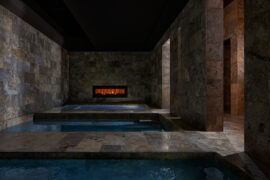What drives the coliving industry? What does the millennial workforce demand from it? Will the definition of coliving and living merge in the future? Homegrown brand Hmlet weighs in.

Sebastian Worthington
February 21st, 2019
What drives the coliving industry? What does the millennial workforce, as its primary audience, demand from it? Will the definition of coliving and living merge in the future? Sebastian Worthington, Chief Creative Officer of Singapore-founded coliving company Hmlet, weighs in.

Sebastian Worthington
Can you share an overview of the co-living sector in Singapore and Asia today?
The concept of co-living has been around for a while now, as far back as the 1930s. It’s been called many other things before but the term co-living itself, probably really rose to prominence in 2016 or so.
Hmlet’s core audience is the millennial workforce – what are some of their traits? What kind of mindset do they subscribe to?
The millennial workforce lives up to its digital nomad culture. They desire the freedom to travel and not have to be locked-in with fixed assets, like owning a home. They want the option to uproot and move to another country within an arm’s reach.

Hmlet Sarkies
Millennials have also embraced the sharing economy. We’re okay with jumping into a stranger’s car (Grab), living in someone’s apartment for a couple of nights (Airbnb) and of course, sharing a slice of our lives on the social media.

What are some of the demands for co-living facilities in Singapore now? And the broader Asian region?
Most of us have felt lonely in a big city. We’ve found that our members prefer spaces where there’s an opportunity to mingle and meet new people. They also want these places to always be at their disposal for when they feel like socialising.
It’s only natural really. Millennials today look for more than just a place to live. They come to Hmlet for the great homes and convenience, but they stay because the community and the friends they’ve made. It’s a trend that transcends Singapore and in the broader Asian region.
How do the demands in this region or align with the demands in other regions in the world?
If we look at the market in Europe and the US, even though space isn’t an issue like it is in Singapore, housing is still too expensive, so the millennial workforce there look to alternatives — that’s where co-living comes in. I’d say the demands of co-living are pretty aligned across the board.
Can you give some examples of how you apply your insights on what millennials want in some of Hmlet’s facilities?
Everything we do at Hmlet is designed for collaboration, from our events to our apartments and communal spaces. Knowing the demands and behaviour of millennials/our members, we put in extra care in designing our communal spaces.

Within each Hmlet home there are common areas like dining areas, shared balconies and living rooms. Every apartment is custom-designed and furnished, with everything they need to feel at home from Day One. For example, our new development at Sarkies Road has 76 rooms. We have created lounges, co-working spaces and even a rooftop with barbecue pits. Through these designs, we’ve brought an entire community to life.

How do you foresee co-living culture evolving in the future? Will the two terms co-living and just plain old ‘living’ merge?
One can only dream, right? I genuinely think co-living is the future. Maybe at some point, the traditional ways of buying and owning a home will become obsolete since everyone wants to live with everyone. But for the foreseeable future, it’ll have to be a co-existing situation.

INDESIGN is on instagram
Follow @indesignlive
A searchable and comprehensive guide for specifying leading products and their suppliers
Keep up to date with the latest and greatest from our industry BFF's!

A curated exhibition in Frederiksstaden captures the spirit of Australian design

Welcomed to the Australian design scene in 2024, Kokuyo is set to redefine collaboration, bringing its unique blend of colour and function to individuals and corporations, designed to be used Any Way!

London-based design duo Raw Edges have joined forces with Established & Sons and Tongue & Groove to introduce Wall to Wall – a hand-stained, “living collection” that transforms parquet flooring into a canvas of colour, pattern, and possibility.
The internet never sleeps! Here's the stuff you might have missed

Phillip Withers joins the podcast to discuss landscape design in relation to Country, place and European notions of control, as well as his part on the Habitus House of the Year 2025 Jury.

Hogg & Lamb’s Albion Bathhouse has been awarded The Health & Wellbeing Space at the INDE.Awards 2025. The project reimagines the contemporary bathhouse as an immersive architectural journey – one that restores balance through atmosphere, materiality and mindful design.